How to Clean the Seven Grimiest Spots in Your Bathroom
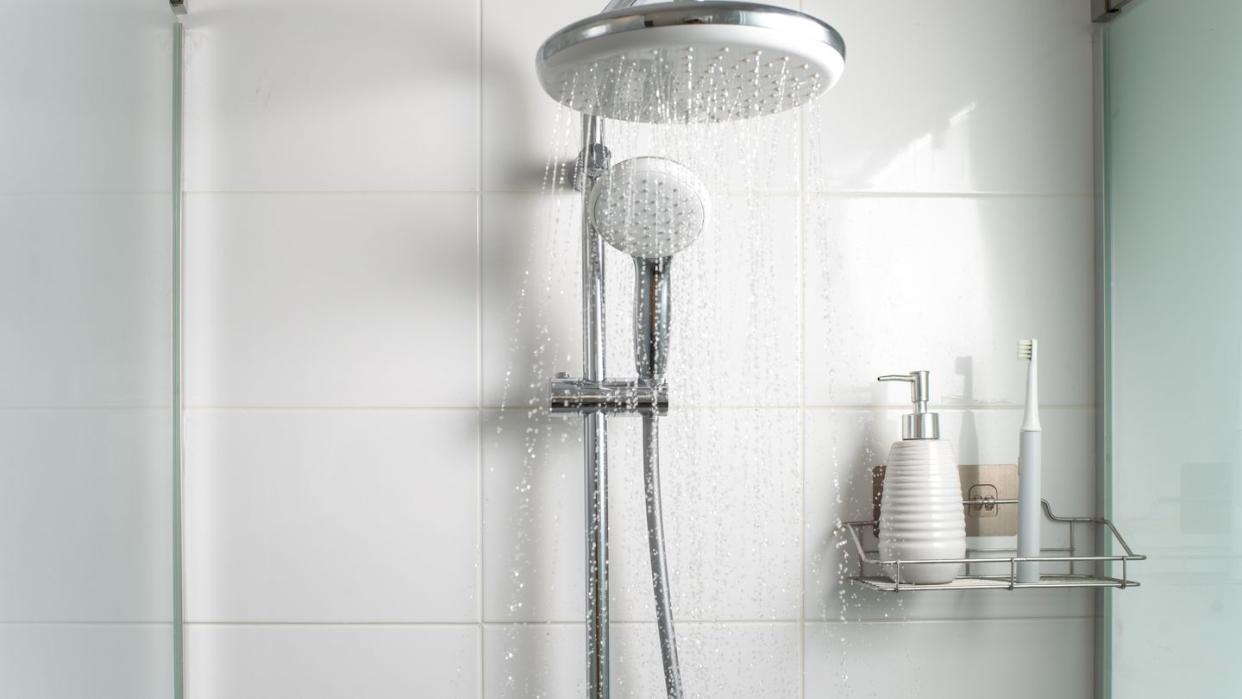
"Hearst Magazines and Yahoo may earn commission or revenue on some items through these links."
Of all the places in your house, you would think your shower should be one of the cleanest–after all, it's where you get clean. But in fact, it might be one of the dirtiest. All those hot showers and steam (mixed with body oils, dirt, and soap scum) foster unwelcome microbial, mold, and biofilm formation. Oh, the irony.
There is a simple solution, though. "Clean your bathroom regularly" says Jean Prominski, certified professional organizer at Seattle Sparkle. "A good deep clean with disinfecting cleaner at least once a week should be adequate to keep mildew at bay and help prevent mold spores from replicating."
While an icky bathroom is not likely to send you straight to the ER, neglecting it can trigger health issues like mold allergies and even a bacteria-caused lung infection. It's not just the shower walls and a splattered sink that needs TLC. Some of the dirtiest things in the bathrooms are the ones with nooks and crannies or a surface that's extremely hospitable for bacterial growth. According to a SafeHome.org survey of more than 500 people and a surface culture analysis, the toilet seat is not the most disgusting spot in your bathroom: Your shower curtain, shower floor, and toothbrush handle all contained 60 times more harmful and antibiotic-resistant germs.
And those aren't the only areas of concern. "Mold can also grow in hidden areas like your electric toothbrush stand or toothbrush cup, toilet brush stand, under the soap dish, in the grout, behind the toilet, under cabinets, and anywhere else," adds Prominski.
Read on for the seven grimiest bathroom offenders and how to make them spick-and-span once again.
Shower Curtain
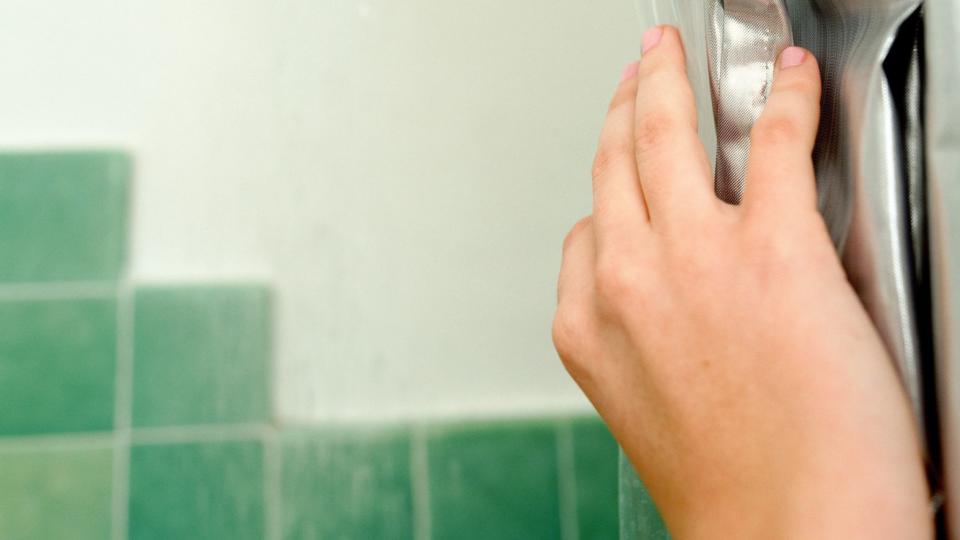
Since moisture is the prerequisite for bacterial survival and growth, it makes sense that the shower curtain liner is a culprit– and can contain 93% of harmful bacteria, according to SafeHome.org data. And then there is that greyish-black mold that tends to accumulate around the seams.
How to clean it: Prominski recommends spraying the shower curtain liner with a bathroom cleaner to keep it free of mold in between washes. Once a month, toss it into a washing machine, and use a regular laundry detergent with a boost of oxygen bleach (like DirtyLabs Bio Enzyme Laundry Booster) or ¼ cup white vinegar for an extra boost. "Wash it on its own or with some white towels if you have issues with the load being off balance," she says. "The reason for white towels is because if you use a bleach cleaner on the shower curtain liner, it could leave spots on non-white laundry."
You can put your shower curtain liner in the laundry even if it's made of PEVA or EVA, more environmentally friendly alternatives for vinyl. "You CAN wash a vinyl shower curtain just like the other ones, but I recommend just replacing them with a PEVA or EVA one that is far less toxic," advises Prominski. "Although Vinyl/PVC shower curtains are inexpensive, they are known to off-gas toxic fumes from the chemicals they are made from for about a month." Replace the liner when it starts to rip or otherwise show too much wear.
Alternatively, try the Outlines shower liner system with a cotton canvas curtain top that connects to replenishable PEVA liners the company recycles–you can send them in every three, six, or nine months, and simply wipe down in between, no washing machine required. (Standard PEVA or EVA liners are not recyclable.)
Shower Floor
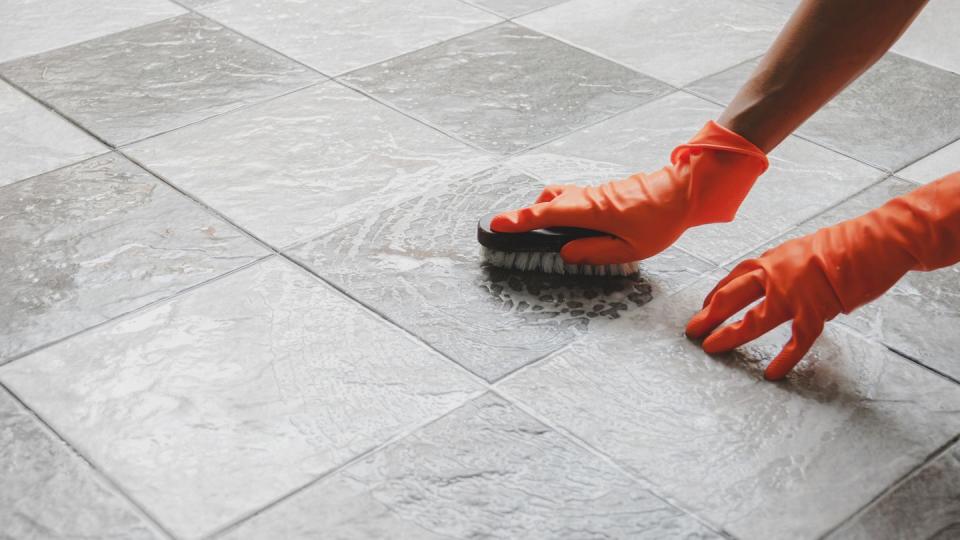
It beats a public shower at the gym, but even in your own bathroom shower floors are a cesspool of germs. The SafeHome.org study shows that 90 to 95 percent of this area has bacteria that is harmful to humans and can resist antibiotics.
How to clean: "Maintenance is the best choice here," says cleaning expert Alessandro Gazzo of Emily's Maids in Dallas. "Keep a spray bottle filled with white vinegar to help you clean the floors clean and remove soap scum and limescale." Once a week, sprinkle powdered laundry soap on the floor, go over it with a squirt of bleach and allow to sit for 10 to 15 minutes before scrubbing. For deep cleaning (every six months or so), Gazzo recommends applying a toilet bowl cleaner and cleaning the gunk with a drill brush attachment. "Toilet bowl cleaners are formulated stronger than shower cleaners because there are more types of bacteria growing in a toilet bowl,” he explains, noting that you should wear gloves and rinse thoroughly when using this method as many toilet bowl cleaners contain acid. (Lysol Power toilet bowl cleaner, for instance, lists hydrochloric acid as an ingredient.) You’ll also want to test a small area of your bathroom tile before trying this hack to ensure it won't get damaged.
Showerhead
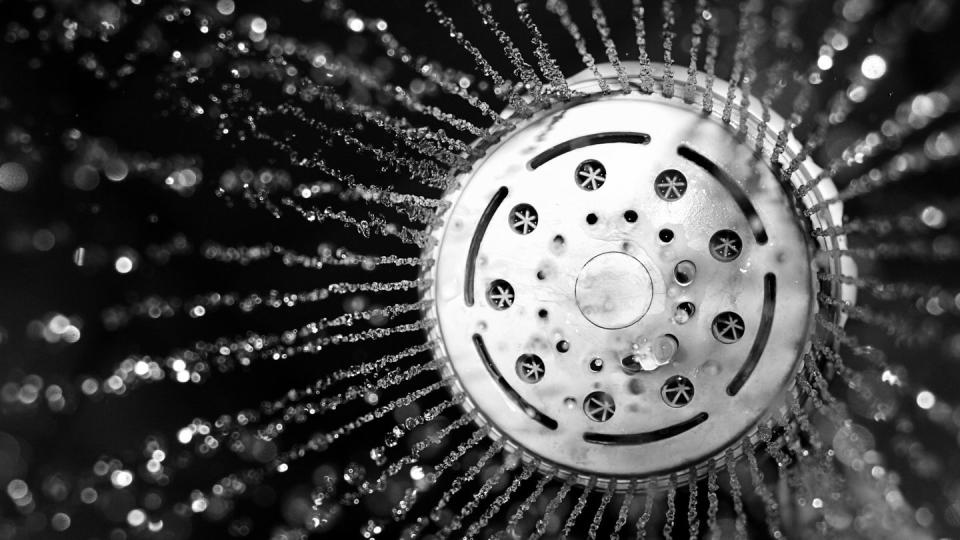
You may already know that the showerhead can get clogged because of hard water mineral deposits—but did you know it's also party central for bacteria? While most are harmless, some, like the members of the genus Mycobacterium, can cause nontuberculous mycobacterial lung infection if the bacteria is dislodged or aerosolized as you shower, according to a 2018 study in mBio. And nobody wants that!
How to clean: "Clean the showerhead every two months, or more if you have a lot of mineral deposits accumulating," Prominski says. All you need to do is fill up a gallon-sized ziplock bag with either vinegar or a commercial product such as CLR Calcium, Lime & Rust Remover. Submerge the showerhead in the liquid by tying the bag around the showerhead with a rubber band tie and let soak for at least two hours. Remove bag and run hot water, then use a scrub brush to get rid of residue. A toothpick can also help unclog holes. If the showerhead water flow is dwindling even after cleaning, it’s time to replace it.
As you clean your shower weekly, use a plant-based multisurface cleaner, like L’Avant Collective Blushed Bergamot, which contains citric acid–a nemesis for mold, mildew, and bacteria. Spray it on the front of the showerhead without worrying about harsh chemicals coming down as you rinse off.
Toilet and Toilet Base
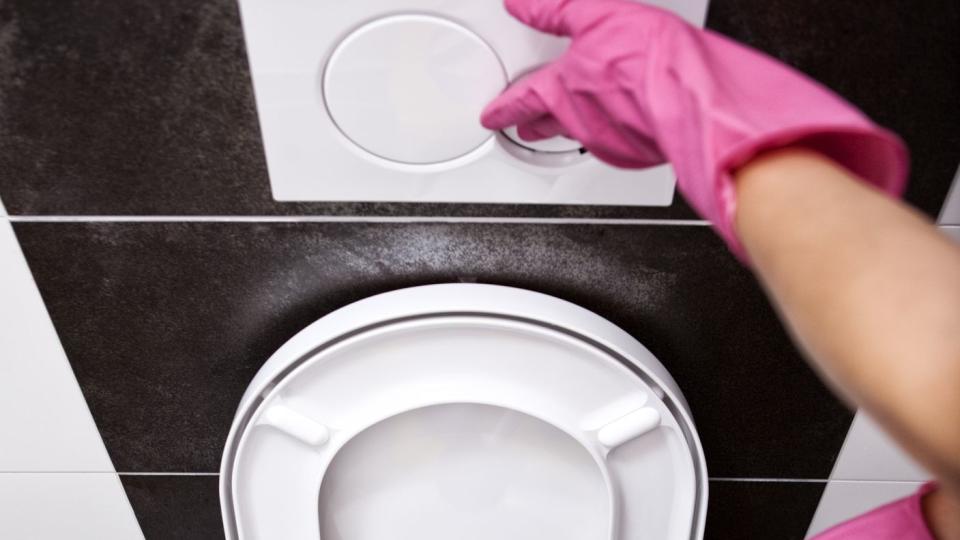
Not so fun fact: The underside rim of the toilet is a cushy place for salmonella bacteria to colonize for up to 50 days, reports a 2021 study in the Journal of Applied Microbiology. And every time you flush, the bacteria and viruses that breed in the bowl are dispersed around the bathroom surfaces.
How to clean: A regular weekly routine with a toilet bowl cleaner is good practice. And, don’t forget to clean the toilet base and the spot behind the toilet. Gazzo recommend cleaning those areas twice a month, paying special attention to the hard to reach areas. If you want to get really hard-core, you can use a portable pressure washer. "These are fantastic because water with such pressure removes dirt and grime easily and you don't have to use your hands directly on that surface which, as you can imagine, it's a huge cocktail of bacteria and microbes," he says. Wipe down the top of the toilet tank and seat with compostable wipes like Clorox Free & Clear Multi-Surface compostable wipes to tackle any spray residue.
For maintenance, add ¼ cup of Safely Universal Cleaner, or another natural cleaner with citric acid, lemongrass leaf oil, and other ingredients that remove harmful bacteria into the water tank once a week—just don't try this with a cleanser containing harsh chemicals such as bleach, as it could damage the toilet tank.
Toothbrush Handle (and Accessories)
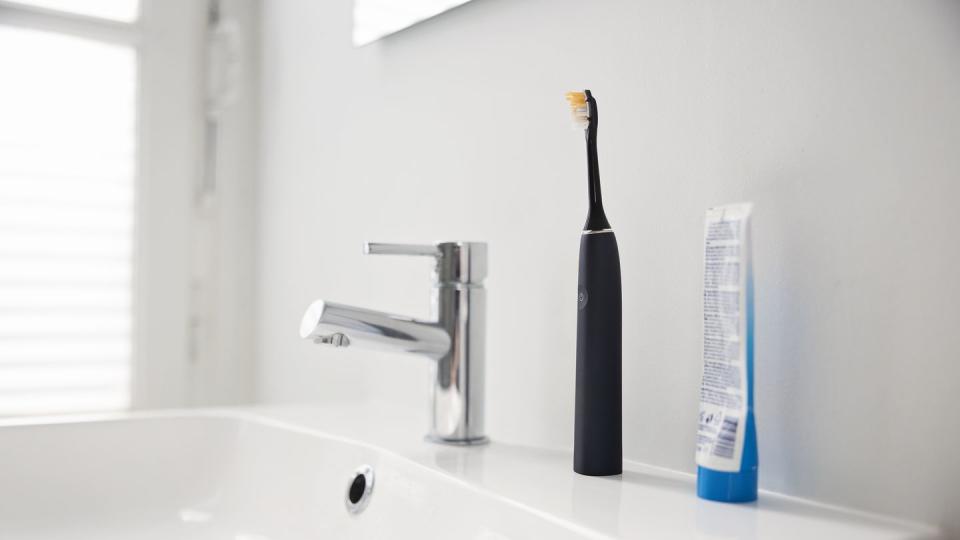
Perhaps the most unexpected grime magnet of the bathroom is your toothbrush handle, which can contain more than 12.6 million colony-forming units (CFU) of bacteria. According to the University of Colorado Boulder research, your hand harbors roughly 150 different species of bacteria. So while you're not licking the handle, just grabbing it can make it downright nasty. [The situation is even worse if you use a toothbrush holder cup that ends up collecting all the runoff—water, spit, and old toothpaste—at the bottom.]
How to clean: If you use an electric toothbrush, you probably have an unpleasant yellowish film around the base of the charger as well. Clean it with CLR Mold & Mildew Clear at least once a week—and spray the cleaner around the sink faucet, handles, and drain while you're at it, to prevent any filmy build up. If you use a regular toothbrush or a water flosser, make sure to wipe the handle down as well with the biodegradable or compostable wipes of your choice.
As for the hotbed of nastiness that is a toothbrush cup, "They are a perfect breeding ground for bacteria and can be the source of some mysterious bathroom odor," says Prominski. Make sure to clean yours once a week: "Take everything out of the cup, spray it with a disinfecting bathroom cleaner, scrub it out, and rinse well with warm water." Prominski says. "Dry the cup before putting the toothbrushes back in and make sure your toothbrush is in a vented area so it can dry between uses." And, as you probably already know, you should replace your toothbrush every three months.
Loofah or Exfoliating Gloves
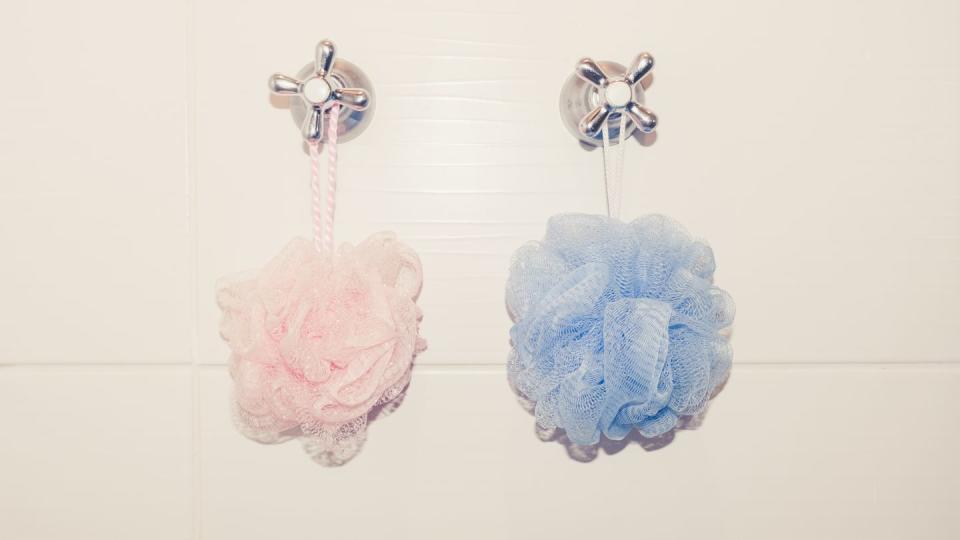
You might never use a loofah again after reading this 2022 Toronto University study of a 45-year-old man who was hospitalized due to lesions that spread from his legs to arms via of a filthy loofah. The plastic sponge is linked to a serious case of a skin infection and lesions due to Streptococcus pyogenes.
How to clean: If you just can't quit your loofah, note that, while you can clean loofahs on the top rack of a dishwasher, it's just better (and safer) to replace them constantly. "These harbor bacteria and germs quickly because they stay wet and are used to scrub dirt off your body," Prominski says. "Natural loofas should get replaced every three to four weeks, or sooner if it smells or looks mildewy." Plastic ones should be changed up every couple of months or sooner if mildew appears. That being said, your best bet is to cleanse yourself with a cotton washcloth that you can toss into laundry after every use.
Bath Toys
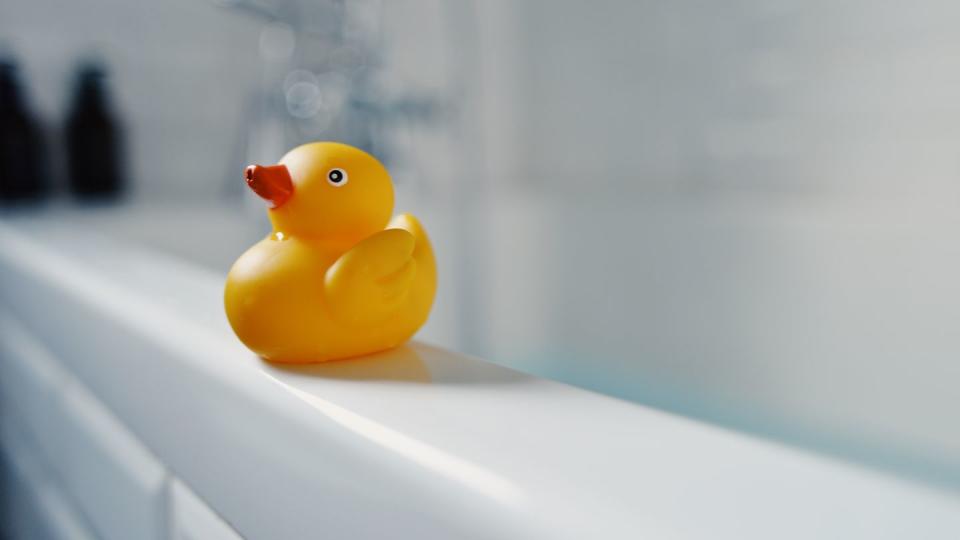
What do you get when you mix tap water with bath toys? A slimy microbe soup! A 2018 Swiss study reported that 58% of bath toys contain fungi that formed as biofilm inside the toys. This is in part due to the toy material, which is made with flexible plastic material know for excessive carbon leaching and unwanted biofilm formation that is only encouraged by all the lovely things floating in bath water—shampoo, skin cells, and other organic matter you might not want to think about.
How to clean: Make sure the bath toys get cleaned before they get dirty. Give the rubber ducky a white vinegar bath after your kids towel off. Designate a little tub and put equal parts white vinegar and water. Squeeze the toys to get the solution inside and let sit for at least 15 minutes. Squeaky clean!
You Might Also Like

